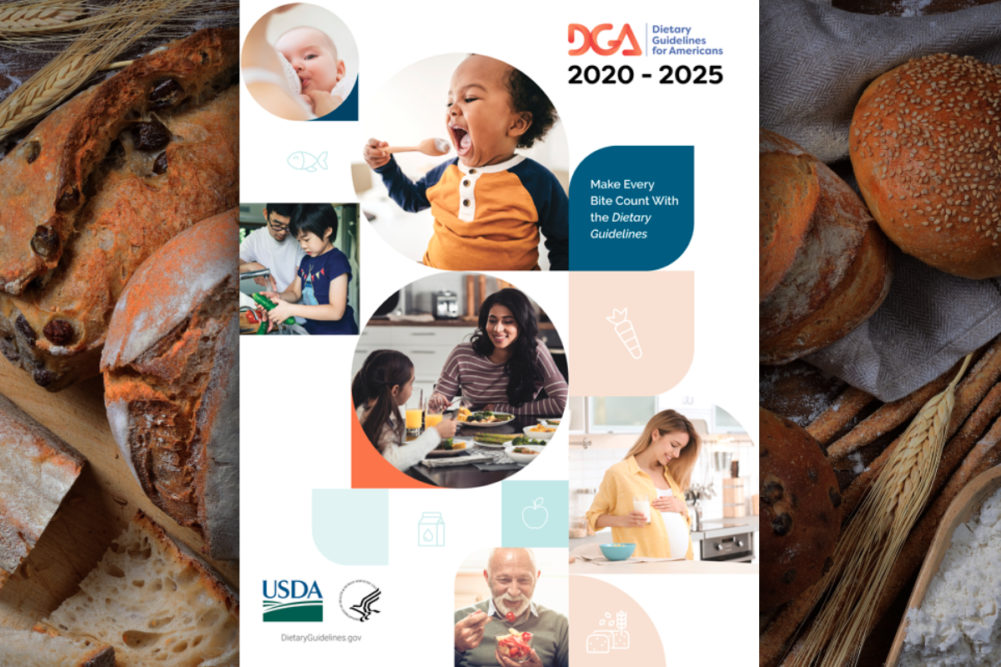 KANSAS CITY — From a bottom-line perspective, it’s understandable if the recently published Dietary Guidelines for Americans 2020-25 (DGA) are considered a win for grain-based foods. By retaining the recommendation that the average healthy adult consume six 1-oz servings of grain foods daily, with at least half of those servings from whole grains, the guidelines maintain grains as the cornerstone of the American diet. Six servings per day make grains the largest dietary source of calories, and by a significant margin.
KANSAS CITY — From a bottom-line perspective, it’s understandable if the recently published Dietary Guidelines for Americans 2020-25 (DGA) are considered a win for grain-based foods. By retaining the recommendation that the average healthy adult consume six 1-oz servings of grain foods daily, with at least half of those servings from whole grains, the guidelines maintain grains as the cornerstone of the American diet. Six servings per day make grains the largest dietary source of calories, and by a significant margin.
More than a symbolic testament to the importance of grains in the diet, the DGA underpin federal nutrition policy and nutrition education guidelines and inform menu decisions for the National School Lunch Program and the National School Breakfast Program participants.
Still, looking ahead to the next five years, the grain-based foods industry would be wise to ask whether the current DGA will elevate, diminish or leave the sector’s stature unchanged in the eyes of consumers and nutrition professionals. One possible way to answer the question is to compare the current edition’s portrayal of grains with earlier versions. The following are excerpts from the last four DGAs — see whether you can guess which passage is from 2020, 2015, 2010 and 2005:
- Daily intake of at least 3-ounce equivalents of whole grains per day is recommended by substituting whole grains for refined grains.
- Grains are generally consumed in forms with higher amounts of sodium (e.g., breads, tortillas, crackers) and added sugars (e.g., grain-based desserts, many ready-to-eat breakfast cereals) rather than the nutrient-dense forms.
- Healthy eating patterns include whole grains and limit the intake of refined grains and products made with refined grains.
- Unlike solid fats and added sugars, enriched refined grain products have a positive role in providing some vitamins and minerals. However, when consumed beyond recommended levels, they commonly provide excess calories.
While there are hints in each excerpt’s wording that may help readers correctly solve this quiz (answers may be found at the end of Page 54), it’s likely few are able to accurately guess the correct year for each. That’s because, notwithstanding the servings recommendation, the tenor of the guidance has been equivocal each and every time. All four editions contain a section on grains, passages that often disparage enriched grains (calling them refined and encouraging avoidance). From one edition to the next, the passages are almost interchangeable. The tone did not change materially in the latest DGA.
It would be far easier for the grain-based foods industry to view the DGA with satisfaction if the industry’s long-term underlying trends were stronger. Per capita flour consumption in 2019 fell to 130.7 lbs, the lowest level in 30 years and off more than 10% from the 1997 peak. Meanwhile, for 40% of consumers, intake of grains falls short of the recommendations in the DGA.
It may be tempting to dismiss the guidelines as irrelevant since so few Americans follow its recommendations. That would be unwise since consumer attitudes toward wheat-based foods in 2021 widely echo those of the Dietary Guidelines, that the food group — at least as far as enriched grains are concerned — is one to avoid when possible rather than embrace.
With consumption trends headed the wrong way, the status quo in the DGA recommendations do not bode well for the grain-based foods sector’s outlook. The industry must recognize that to meaningfully change the way its foods — which are nutritious, delicious, convenient and economical — are perceived, serious investments will be required. Pathways for research have been identified showing how enriched grains belong in healthy eating patterns and that avoidance of grains appears to have triggered a tragic increase in neural tube birth defects. What is needed is for the industry to commit the necessary resources to deliver sound science that brings grains’ innumerable positives boldly to the fore. And soon!





